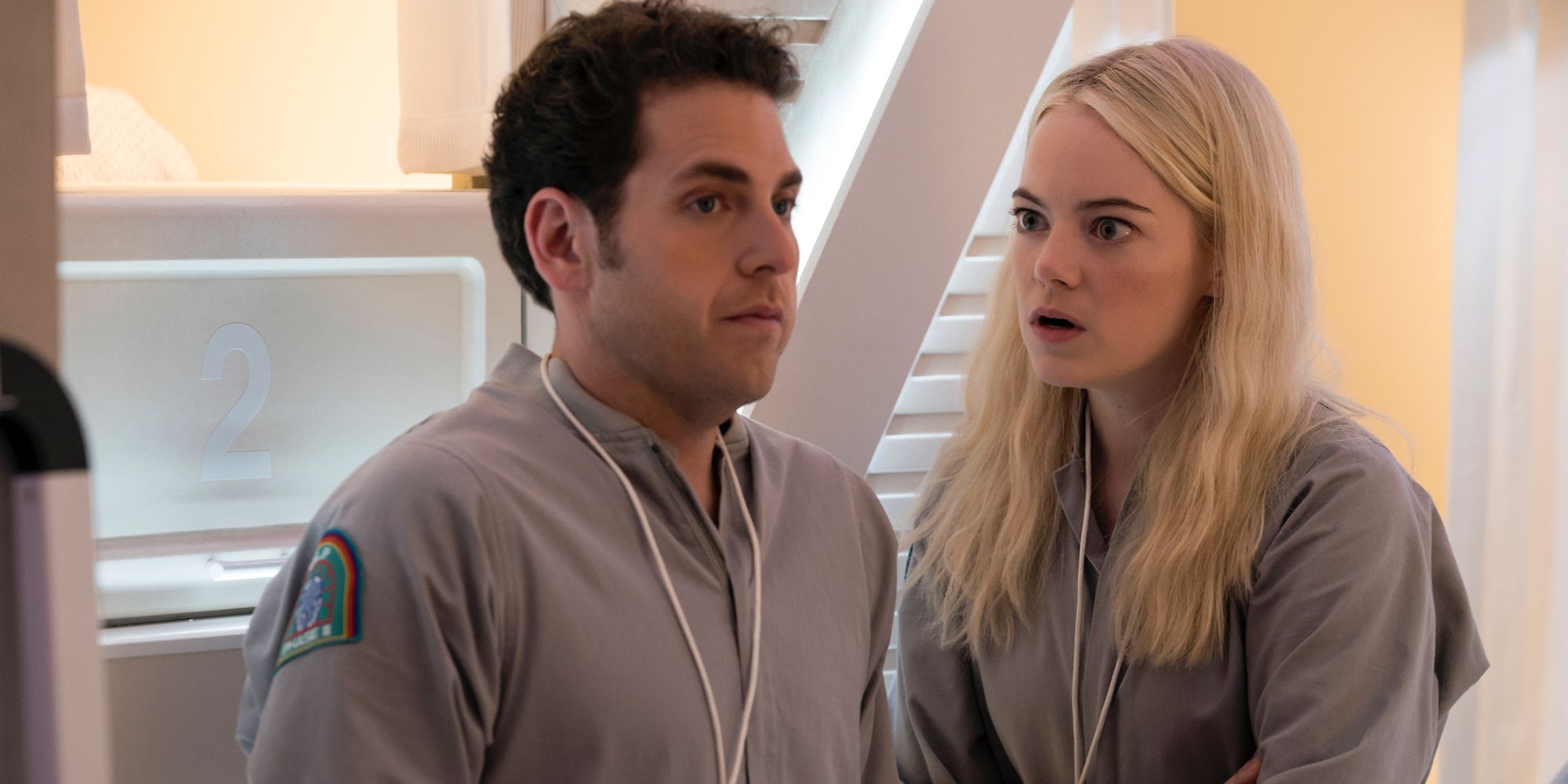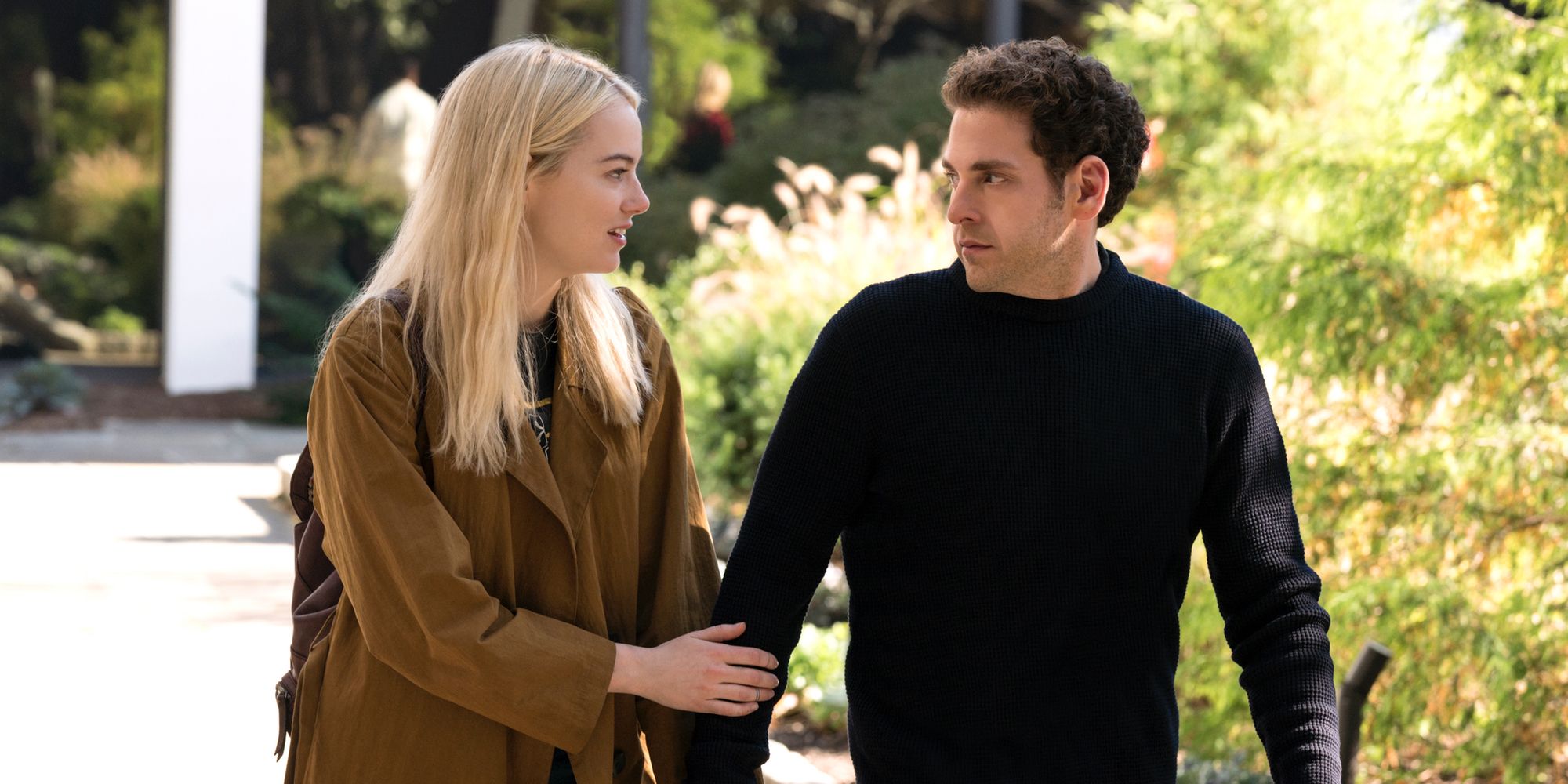On paper, Netflix’s Maniac is one of the most attractive properties in television (streaming or otherwise) at the moment. Boasting a roster of talent that was, once upon a time, reserved only for big-budget, award-friendly movies, the new series features two Academy Award winners in Emma Stone and Sally Field, as well as multiple Academy Award nominee Jonah Hill, and a stellar cast of supporting actors like Justin Theroux, Sonoya Mizuno, and Billy Magnussen, to name a few. The series is also written by author and screenwriter Patrick Somerville (The Leftovers, The Bridge) and directed by Cary Joji Fukunaga.
Fukunaga, of course, is in the news as the new director of Bond 25, stepping in to the job recently vacated by Danny Boyle. And, given how these things usually work, he’ll also be the latest director to part ways with the franchise due to “creative differences.” But until that day comes (if it ever does), Netflix has a gorgeous-looking limited series that’s packed full of stars and is directed by the guy who’s going to make 007 look good saving the world for the twenty-fifth time. It’s tangential relationship to Bond is now an added bonus for a series that was already a source of great interest given the cast, the acclaim surrounding Fukunaga after directing the entire first season of HBO’s True Detective, and the string of could-have-been-great projects he ended up not making for various reasons, like the recent box-office smash IT or TNT’s Emmy nominated The Alienist.
More: The Good Cop Review: Tony Danza Charms In Otherwise Tepid New Series
The manner in which a multi-episode, closed-ended series like True Detective benefitted from the efforts of a director like Fukunaga is made very evident in Maniac as well. That’s especially true given the (deliberately) absurd nature of its fantastical premise, it’s darkly comedic but ultimately humanistic tone, and the fact that it is dealing in multiple phony (or presumed to be phony) realities in order to tell a story that is, at the end of the day, about sad people trying to be less sad. In that sense, the mileage people will get from Maniac is going to vary wildly, not only because it takes nearly four episodes (of a ten-episode season) for the story to actually get going, but also because the series dabbles in ponderous questions pondering the nature of reality, embarks on Quixotic quests by directly referencing Don Quixote, and generally prefers style over substance.
But what style. Maniac is a visual treat, and if that’s what you came to the series for, you won’t be disappointed. Fukunaga and Somerville have created a fascinatingly anachronistic, analog world that bends reality ever so slightly. Every episode offers some new fascinating detail to luxuriate over, and that’s before the series segues into a genre-hopping adventure that’s part of the radical procedure meant to fix Annie (Stone) and Owen’s (Hill) seemingly broken brains. The procedure, known as U.L.P. is partially the brainchild of Dr. James Mantleray (Theroux), and conducted through a company called Neberdine Pharmaceutical and Biotech. And though it’s outlandish by design, it’s perhaps the least weird thing about Maniac.
Maniac is a series that revels in tiny details, and in making those tiny details feel significant. Its narrative style runs parallel to that of Hill’s Owen, a mentally ill young man with delusions of grandeur — he’s convinced he’s the chosen one to save the world — finding meaning in places where there probably is none. Annie is much the same, though her unmooring from physical reality is more drug induced. That partially explains why she a board in a bus terminal directs her to Neberdine in search of pill shaped in the letter “A.” After just a few episodes, the hope is that all those disparate details will add up to something far greater than they are are on their own. Unfortunately, that’s not the case. All of Maniac's visual flourishes, flights of fancy, and tiny world-building details of surface-level significance seem to exist for the purpose of crafting narrative coincidences and to underline the show’s distinct formalism and push into surrealism, without giving much thought to the substantiveness of it all.
Though Maniac struggles at times to deliver the goods on the storytelling front, it is aided tremendously by its impressive cast. Stone and Theroux are very good, with the latter delivering a performance that’s assuredly on the same bizarre wavelength as the rest of the series. Theroux needn’t even be on screen to make his presence known. Maniac kicks off with a voiceover that has The Leftovers star taking viewers all the way back to the Big Bang, a “cosmic orgy” that soon introduces an amoeba and so on and so forth. The exuberance with which Theroux delivers his voiceover carries over to the rest of his performance as well. As such, Mantleray quickly becomes series MVP, especially when he’s flanked by Sonoya Mizuno and the very funny Rome Kanda, as two fellow researchers at Nerberdine.
Though Maniac is often beautiful to look at and impressive in its scope, particularly when it expands into a series of mind-bending mini-movies, it never quite becomes transcendent. Despite the impressive craftsmanship, as well as its conviction with regard to its surrealism, the story itself doesn’t really have anything to say. Maniac begins by questioning whether or not
Owen has become untethered from reality and, in fact, begins to question what reality is. Though the series impresses when it no longer concerns itself with such matters, the answer to why it matters nevertheless remains elusive.
Next: American Vandal Season 2 Review: A Darkly Absurd Follow-Up
Maniac is currently streaming on Netflix.



